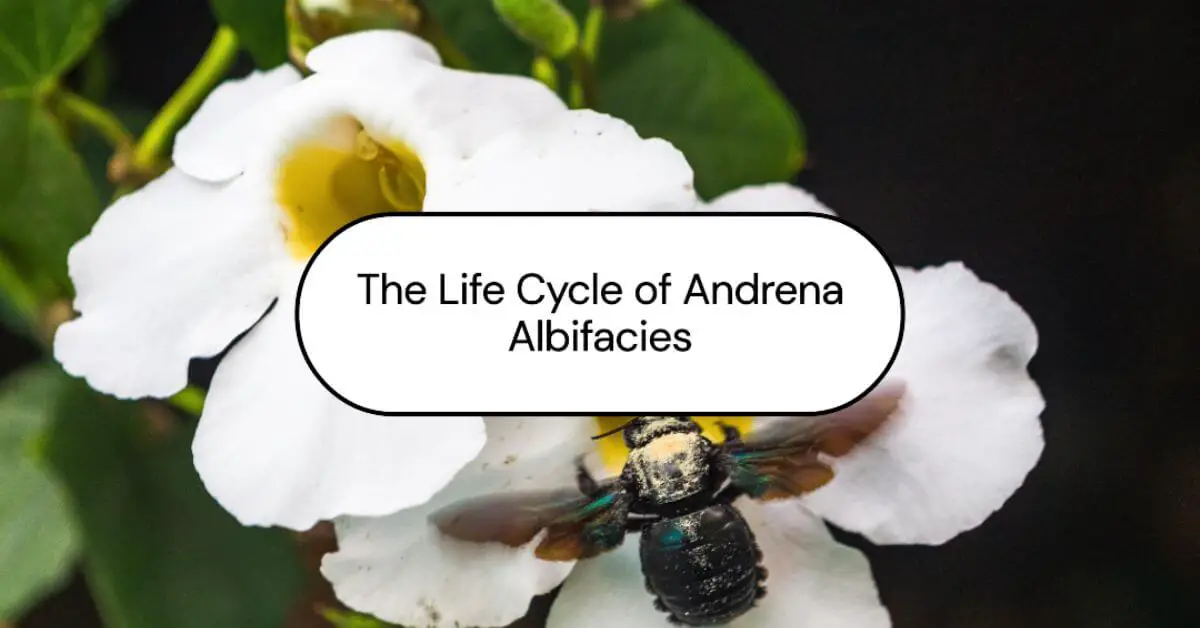Andrena albifacies Alfken, commonly known as the White-faced Mining Bee, belongs to the order Hymenoptera, family Andrenidae. This species falls under the genus Andrena and the specific epithet albifacies Alfken. Understanding and studying Andrena albifacies is crucial due to its important role as a pollinator and its impact on ecosystem dynamics.
Some Information About Andrena albifacies Alfken
Taxonomy and Classification
Andrena albifacies Alfken is classified under the order Hymenoptera, which encompasses various insects like bees, wasps, and ants. It belongs to the family Andrenidae, commonly referred to as mining bees. The genus Andrena is vast, consisting of over 1,300 species, including Andrena albifacies . The species name, albifacies, derives from the Latin words “albus” meaning white and “facies” meaning face, referring to the distinguishing white face markings of these bees.
Description and Identification
Andrena albifacies Alfken displays distinct physical characteristics. The adult bees typically measure around 8 to 12 millimeters in length. They have a robust body structure with a dense covering of hairs, which aids in collecting pollen. The most notable feature of Andrena albifacies is its white face, making it easily recognizable. Additionally, the females have a black body with white hair bands on their abdomen, while the males have a more uniform brown coloration.
To identify Andrena albifacies , one can observe its size, body shape, and coloration. The unique white face, coupled with the distinguishing hair bands on the abdomen of females, aids in proper identification.
Distribution and Habitat
Andrena albifacies Alfken is primarily found in North America, specifically in regions like the eastern United States and southern Canada. Within these regions, they inhabit a variety of habitats, including open woodlands, meadows, gardens, and fields. These bees are often associated with areas containing suitable nesting sites and a diverse range of flowering plants.
Related Articles:
Life Cycle and Behavior Andrena albifacies.
The life cycle of Andrena albifacies Alfken consists of distinct stages. After emerging from their winter hibernation, the females search for suitable nesting sites in the ground. They construct individual nests, which consist of multiple chambers. These solitary bees do not form large colonies but can be found nesting in aggregations.

As efficient pollinators, Andrena albifacies forage on a wide range of flowering plants, collecting pollen to feed their offspring. The males are known to establish territories near nesting sites, engaging in territorial behaviors to attract females for mating.
Role in Ecosystem
Andrena albifacies Alfken, like many other bee species, plays a vital role in ecosystem functioning. They are efficient pollinators, transferring pollen from the male parts (anthers) to the female parts (stigmas) of flowers, aiding in the reproduction of various plant species. Through their foraging activities, they facilitate the fertilization and subsequent seed production of numerous flowering plants, thus contributing to the overall biodiversity and stability of ecosystems.
Threats and Conservation
Despite their ecological importance, Andrena albifacies faces several threats that impact its population. Habitat loss due to urbanization, agricultural intensification, and climate change poses significant challenges. Pesticide exposure also adversely affects bee populations, including Andrena albifacies .
To safeguard Andrena albifacies Alfken and other bee species, conservation efforts are crucial. Promoting the preservation and restoration of suitable habitats, reducing pesticide use, and raising awareness about the importance of bees in ecosystems are essential steps towards their conservation.
Summary
Andrena albifacies Alfken, the White-faced Mining Bee, is a remarkable native bee species that contributes to the pollination of flowering plants. With its unique physical characteristics, diverse habitat preferences, and essential ecological role, this bee species deserves attention and conservation efforts. By understanding and protecting Andrena albifacies, we can contribute to the conservation of pollinators and the preservation of healthy ecosystems.